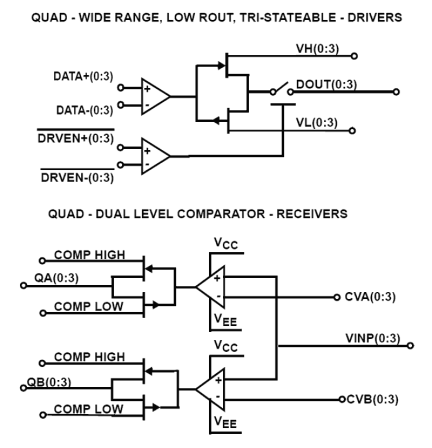封装信息
| Lead Count (#) | 72 |
| Pkg. Code | LCY |
| Pitch (mm) | 0.5 |
| Pkg. Type | QFN |
| Pkg. Dimensions (mm) | 10.01 x 10.01 x 0.65 |
环境和出口类别
| Moisture Sensitivity Level (MSL) | 3 |
| Pb (Lead) Free | Yes |
| ECCN (US) | EAR99 |
| HTS (US) | 8542390001 |
| RoHS (ISL55100AIRZ-T) | 下载 |
产品属性
| Lead Count (#) | 72 |
| Carrier Type | Reel |
| Moisture Sensitivity Level (MSL) | 3 |
| Pb (Lead) Free | Yes |
| Pb Free Category | Pb-Free 100% Matte Tin Plate w/Anneal-e3 |
| Temp. Range | -40 to +85°C |
| Country of Assembly | Taiwan |
| Country of Wafer Fabrication | Taiwan |
| Drivers (#) | 4 |
| Fall Time | 0.0025 |
| IS (mA) | 70 |
| Input Signal (Max) | 18 |
| Input Signal (Min) | -V<sub>P</sub> |
| Input Signal Range | -VP to VP |
| Input Supply (Max) (VP) | 18 - 18 |
| Input Supply Range (V) | -18 - +18 |
| Input Voltage (Max) (V) | 18 |
| Length (mm) | 10 |
| MOQ | 3000 |
| Operating Freq (Max) (MHz) | 50 |
| Output Signal (Max) (V) | 18 |
| Output Signal (Min) (V) | -18 |
| Output Signal Range | -18 to 18 |
| Peak Output Current IPK (A) | 1 |
| Pitch (mm) | 0.5 |
| Pkg. Dimensions (mm) | 10.0 x 10.0 x 0.65 |
| Pkg. Type | QFN |
| Qualification Level | Standard |
| RDS (ON) (Ohms) | 5 |
| Rise Time (μs) | 2.5 |
| Thickness (mm) | 0.65 |
| Turn Off Delay (ns) | 18 |
| Turn On Delay (ns) | 18 |
| Width (mm) | 10 |
描述
The ISL55100A is a quad pin driver and window comparator fabricated in a wide voltage CMOS process. It is designed specifically for Test During Burn-In (TDBI) applications, where cost, functional density and power are all at a premium. This IC incorporates four channels of programmable drivers and window comparators into a small 72 Ld QFN package. Each channel has independent driver levels, data and high impedance control. Each receiver has dual comparators, which provide high and low threshold levels. The ISL55100A uses differential mode digital inputs and can therefore mate directly with LVDS or CML outputs. Single-ended logic families are handled by connecting one of the digital input pins to an appropriate threshold voltage (e.g., 1.4V for TTL compatibility). The comparator outputs are single-ended and the output levels are user-defined to mate directly with any digital technology. The 18V driver output and receiver input ranges allow this device to interface directly with TTL, ECL, CMOS (3V, 5V and 7V), LVCMOS, and custom level circuitry, as well as the high voltage (super voltage) level required for many special test modes for Flash devices.
